When you think of art, you probably conjure the image of a museum or canvases hanging enclosed in glass on walls. But, iconic public art is everywhere, and it engages its passersby to elicit an emotional response, provoke thoughts and promote discussion. It can unify cultures or cause controversy, breathe life into open air or convey feelings of entrapment.
In today’s day and age, public art has become an instagrammable attraction which has allowed for it to be easily and digitally spread. Let alone the street art that exists on walls in every city, there are big name sculptures and standout pieces around the world that are universally recognizable, and some that exist just beyond the beaten path.
Legendary public art serves a purpose that’s as unique to each individual who experiences it as it is to its creator. Whether you’re into exploring new places specifically to find the public art or if you’d rather roam around to see what you come across by chance, here’s a look at some of the world’s most notable public art and the stories behind them.

Les Voyageurs – Bruno Catalano
In a world of movement and change, Bruno Catalano’s collection of sculptures, called Les Voyageurs, are hard to miss. Considered to be a citizen of the world, Bruno Catalano fittingly placed his series of mysteriously nomadic sculptures around the port of Marseilles in France. The sculptures, which come across as missing organs and different pieces of their body, allow their viewer to question the moment and movement between going and staying. Usually, they are holding suitcases or pieces of luggage, and according to Bruno himself, they are intended to convey the “search of movement and expression of feelings.”
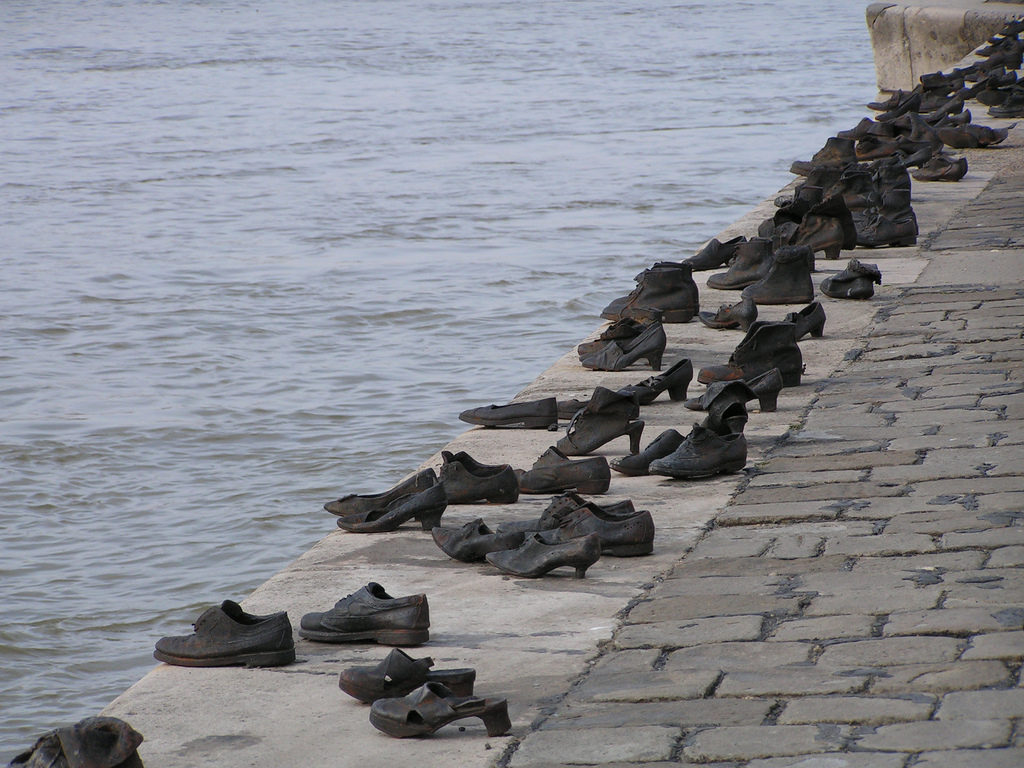
The Shoes – Can Togay and Gyula Pauer
Every work of art, public or private, has a story to tell. While some are happy, others may conjure up dark moments of history like The Shoes that sit along the Danube River in Budapest, Hungary. The idea was conceived by film director Can Togay and sculptor Gyula Pauer brought them to life to honor the Jews who were ruthlessly murdered during World War II by the fascist Arrow Cross militia who worked alongside the Nazi regime. The militia ordered 20,000 Jews to remove their shoes and sit along the edge of the river, so that their bodies would fall into the water and float away upon being shot. Now, 60 pairs of shoes made from iron sit along the bank to commemorate and honor the fallen victims, bringing a whole new meaning to walking in someone else’s shoes.
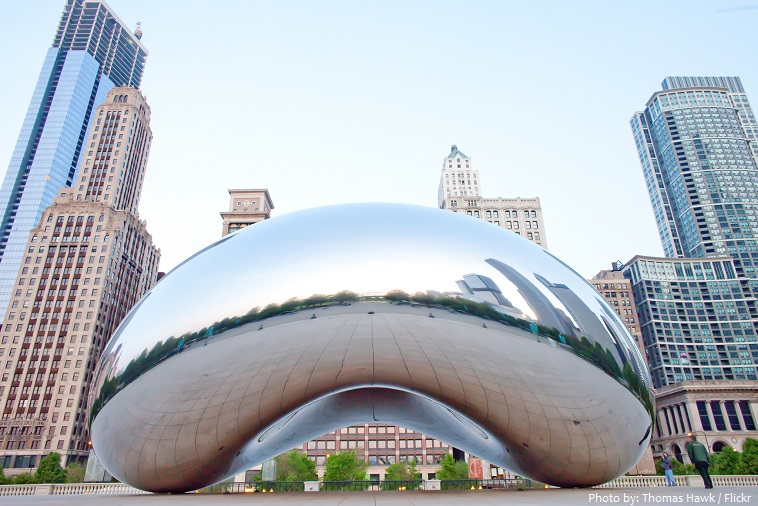
Cloud Gate – Anish Kapoor
Known to most as “the Bean,” Cloud Gate is a massive and reflective stainless steel sculpture in the heart of Chicago’s Millennium Park. Created by Anish Kapoor, the bean-shaped piece of art has become a major tourist attraction and, of course, a solid choice for a selfie because the unique perspective the camera can capture. Reflecting the skyline, and inherently, the clouds, Cloud Gate debuted in 2004 and continues to be a main point of attraction for those passing through Chicago.
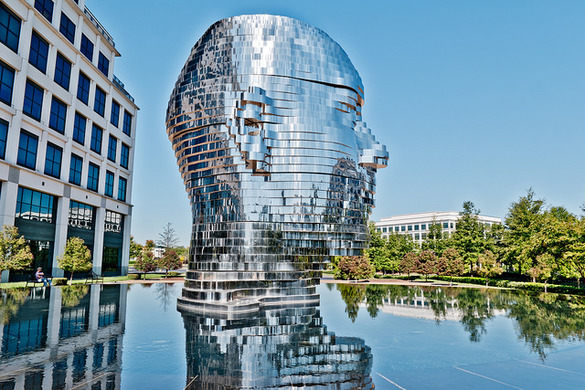
Metropolis – David Cerney
Situation in a busy shopping center in Prague, a 42-layer sculpture by David Cerney stands erect to depict the tortured personality of Jewish novelist and short story writer Franz Kafka. The work of Kafka merged realism with fantasy, and this juxtaposition is felt through the kinetic movement of the sculpture’s pieces of stainless steel, which rotate in typical Cerney fashion.
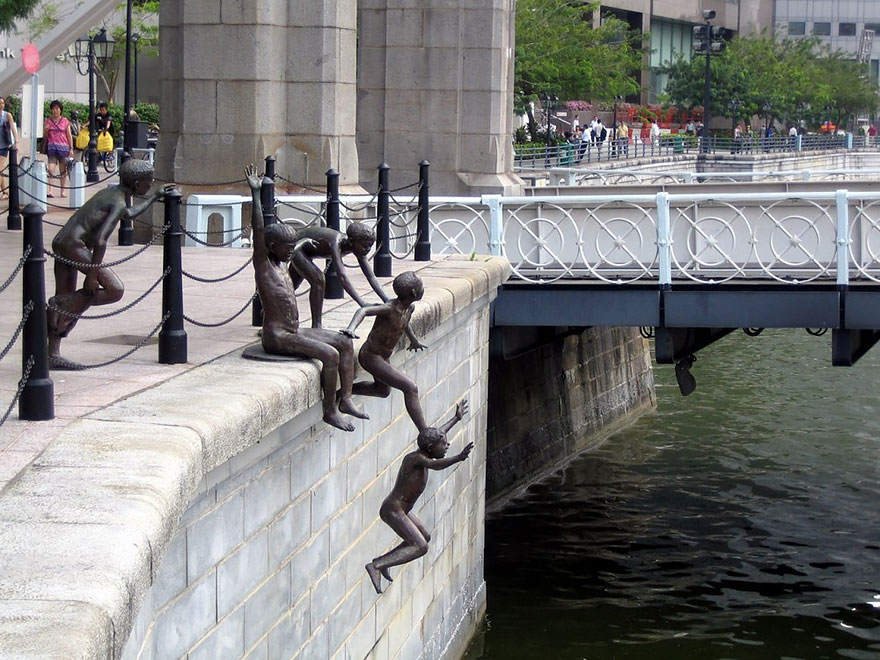
First Generation – Chong Fah Cheong
If you walk along the Singapore River, you’ll be hard pressed to miss Chong Fah Cheong’s five boys made of bronze jumping into the water. Although the pathway along the river has been transformed with luxury hotels, Chong’s sculptures are reminiscent of playful days in the past that tell the history of Singapore’s once simpler pleasures.
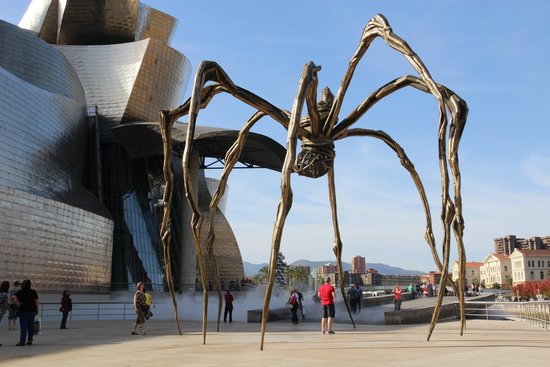
Maman – Louise Bourgeois
As a master of many forms of art, Louise Bourgeois led avant-garde movements in the 20th century and used her body of work to explore her painful memories of her childhood. Growing up with an unfaithful father and complacent mother, Bourgeois portrays the ups and downs of motherhood through Maman, an ambitious nearly 30 foot tall sculpture of a spider looking like it is trying find balance on its skinny, unstable legs, which stands outside the Guggenheim Bilboa Museoa. As an ode to her mother, who was a weaver, the spider protects its sac of eggs and represents the pull between being both a protector and predator. It’s in this mixture of strength and fragility that evokes the sense of vulnerability that is inherent in existing as a woman and raising children.

Marfa – Michael Elmgreen and Ingar Dragset
Like an arid version of Art Basel in Miami, a tiny town in the Chihuahuan Desert of Texas boasts some of the world’s most enticing pieces of art. The art enclave was started when minimalist artist Donald Judd bought an Army base in 1994 before he passed away. From there, artists like Michael Elmgreen and Ingar Dragset created installations like Prada Marfa, a faux boutique displaying luxury shoes and bags in the middle of the desert. Although the artist duo experienced controversy after being accused that the art is illegal advertising, Elmgreen vows that the work was not meant to promote the luxury retailer. On the contrary, the artists were intrigued to create Prada Marfa as a way to display how the gentrification of neighborhoods transforms communities into centers for consumerism.
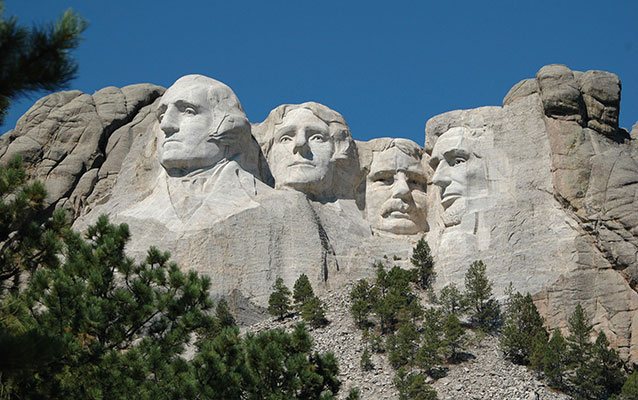
Mount Rushmore – Gutzon Borglum
Few pieces of art exist as the entire facade of a mountainside. From 1927 to 1941, Sculptor Gutzon Borglum worked with the help of his son to sculpt the 60-foot heads of four American Presidents into the mountains of Mount Rushmore in Keystone, South Dakota. Featuring George Washington, Thomas Jefferson, Abraham Lincoln, and Theodore Roosevelt, the work of art is an ode to the establishment, growth and protection of the ideals of American society and the independent existence of the United States. Federal funding was granted to commission the art as it serves as a tourist attraction for the state.

Statue of Liberty – Frederic Auguste Bartholdi
What has since become an emblem and one of the most notable figures of both New York and America, the Statue of Liberty was actually a gift to the United States from France. Created by French sculptor Frederic Auguste Bartholdi, the neoclassical sculpture is of Libertas, the Roman goddess of liberty. Holding a torch in one hand and a tablet in the other with Roman numerals for July 4, 1776, the date of America’s Independence from Britain, the gifted sculpture has become a main attraction for all those who visit Liberty Island.
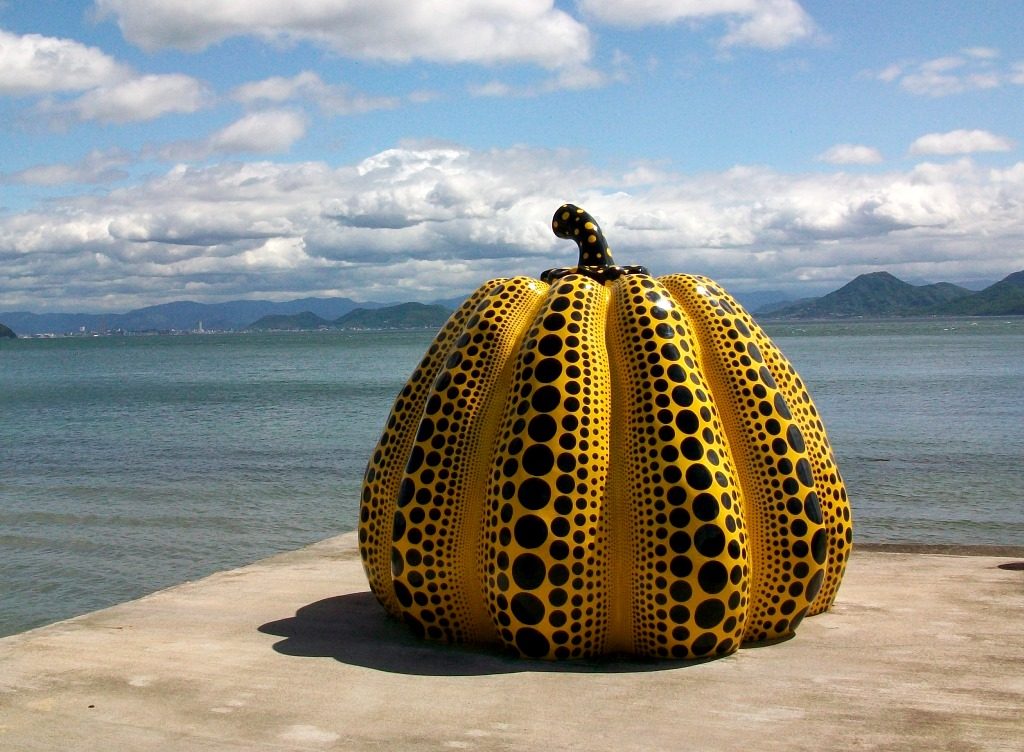
Pumpkin – Yayoi Kusama
Pumpkin is a public piece of pop art created by one of the most famous Japanese artists, Yayoi Kusama. Sitting at the edge of the pier in Naoshima, Japan, you’ll spot the work of art as you arrive to the Miyanoura Port by ferry. Pumpkins are a motif in her work that, according to Kusama, provide a “warm feeling and human-like quality.” Along with her signature polka dot design, the yellow pumpkin sits in striking and unexpected opposition to the island’s surrounding water.
Art is Everywhere
You don’t have to be an art major to recognize, relish in and admire all the works of art around the world. From graffiti to massive sculptures, public parks and architectural feats, public art continues to fill cities with hope and tell the stories of history and humanity in an emotionally touching and physically captivating way.
As Polish-American novelist Jerzy Kosinski once said, “The principles of true art is not to portray, but to evoke.”
